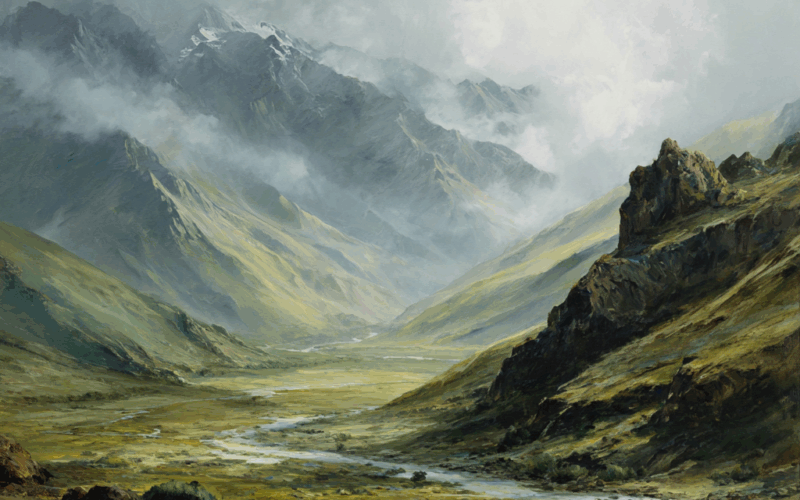Preparing for the Journey Across Wild Terrain
Venturing into untamed landscapes demands careful preparation long before the first step is taken. Understanding the environment you’re about to enter is the foundation for a safe and rewarding journey. Researching the climate, terrain, and local conditions provides valuable insights that influence packing decisions and route planning. Studying topographic maps, consulting weather forecasts, and reading accounts from previous travelers can all help identify potential challenges and how best to address them. Preparation also includes physical conditioning, as wild terrains often require sustained endurance, agility, and strength to traverse.
Equally important is building a realistic plan that balances ambition with safety. Setting achievable daily distances, identifying rest points, and knowing alternative routes can prevent exhaustion or dangerous detours. A good plan also factors in contingency measures—what to do if a path becomes impassable, how to handle unexpected weather shifts, and when to turn back. Such foresight ensures that the journey remains a thrilling adventure rather than a reckless gamble, allowing the traveler to focus on the beauty and raw power of the wild.
Essential Gear and Survival Skills
The right gear can mean the difference between a memorable expedition and a dangerous ordeal. Every item carried into the wilderness should serve a clear purpose, from lightweight shelter to a reliable water filtration system. Footwear must be chosen to match the terrain, offering both comfort and durability, while clothing should be layered for quick adaptation to changing weather. Navigation tools, whether traditional compasses or GPS devices, are vital for staying on course, especially in areas without marked trails. A first-aid kit tailored to the specific environment can address everything from blisters to more serious injuries.
Survival skills are as essential as equipment. Knowing how to start a fire in wet conditions, purify water from natural sources, or identify edible plants can turn a crisis into a manageable challenge. Wilderness first aid knowledge, such as treating sprains or hypothermia, is invaluable. Equally important is the skill of reading the land—understanding animal tracks, weather patterns, and the behavior of natural landmarks. Preparedness in both gear and knowledge creates a strong foundation for confidently facing the uncertainties of untamed landscapes.
Navigating Natural Obstacles and Hazards
Traversing wild landscapes often means confronting rivers, cliffs, dense forests, and other natural barriers. Rivers may require careful assessment of depth, current speed, and entry points before crossing, while steep ascents and descents call for controlled movements and the use of ropes or trekking poles. Dense vegetation can slow progress dramatically, making it crucial to understand how to find or create safe passages without damaging the environment. Each obstacle tests adaptability, patience, and decision-making skills under pressure.
Hazards in the wild are not limited to physical barriers; weather can transform familiar paths into dangerous zones within hours. Heavy rains can cause landslides, snow can obscure landmarks, and strong winds can make high ridges unsafe. Awareness of these risks, along with the ability to respond quickly, ensures safer travel. Experienced explorers know that sometimes the wisest decision is to wait, reroute, or even turn back, preserving safety for another attempt.
Encounters with Wildlife and Nature’s Wonders
Meeting wildlife in its natural habitat is one of the most exhilarating aspects of traveling through untamed terrain. From the distant sight of grazing herds to the fleeting glimpse of elusive predators, such moments offer a profound connection to the natural world. Observing animals in their own environment teaches respect for the delicate balance of ecosystems and reminds travelers that they are guests in these habitats. Maintaining a safe distance, avoiding sudden movements, and never feeding wildlife are essential practices to protect both animals and humans.
Nature’s wonders go beyond wildlife, encompassing breathtaking geological formations, waterfalls, and panoramic vistas that reveal the raw artistry of the earth. These encounters often become the most treasured memories of the journey, inspiring stories and reflections long after returning home. However, to truly appreciate these wonders, travelers must move quietly and mindfully, minimizing their impact so that future explorers can enjoy the same untouched beauty.
Physical and Mental Challenges on the Trail
Crossing wild landscapes is as much a test of mental resilience as it is of physical strength. Long days of hiking with heavy gear can strain muscles and joints, while unpredictable terrain can lead to fatigue faster than anticipated. Altitude changes, temperature swings, and constant exposure to the elements challenge even the most prepared adventurers. Proper nutrition, hydration, and pacing are key to maintaining stamina throughout the journey.
Mentally, the isolation and unpredictability of the wild can test patience, adaptability, and emotional endurance. Dealing with setbacks—such as delayed progress, damaged equipment, or unexpected hazards—requires a calm, problem-solving mindset. Many travelers find that these challenges ultimately strengthen their resilience, teaching them to adapt quickly and remain focused even in difficult conditions. By the end of the journey, the mental and physical trials often become sources of pride and lasting personal growth.
Memorable Stories from Adventurers
Memorable tales from those who have crossed untamed landscapes often reveal the deep emotional and physical rewards of such journeys. Many recount moments when the path ahead seemed impossible, only to find a creative solution or unexpected help. These stories remind us that perseverance often leads to remarkable experiences that would never happen in more controlled environments.
Some common themes in these stories include:
- Overcoming dangerous river crossings and reaching the other side safely.
- Witnessing rare wildlife behaviors that few ever see in person.
- Finding beauty in moments of hardship, such as a rainbow after a storm.
- Forming unbreakable bonds with fellow travelers through shared challenges.
- Experiencing a renewed sense of purpose and connection to nature.
These accounts not only entertain but also inspire others to embrace the call of the wild. They show that while the landscapes may be untamed, the rewards for those willing to face them are profound and lasting.
Questions and Answers
Answer 1: Researching the environment, including terrain, climate, and potential challenges, is the most important first step.
Answer 2: Gear provides the necessary tools for safety and comfort, while survival skills ensure you can adapt to unexpected situations.
Answer 3: They should assess risks carefully, use appropriate techniques or equipment, and choose safe crossing points or routes.
Answer 4: Maintain a safe distance, avoid disturbing the animals, and observe quietly to protect both wildlife and yourself.
Answer 5: They test endurance, resilience, and adaptability, often leading to personal growth and lasting memories.

